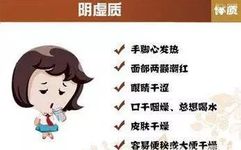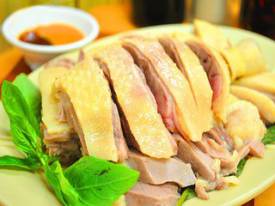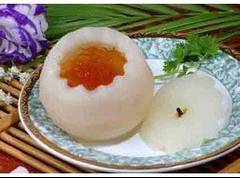[New Friends] Click the blue text “Spinal Manipulation Therapy” below the title to quickly follow
[Old Friends] Click the share button in the upper right corner and follow the public WeChat account spinal-health
[More Information] Open the public platform and click the upper right corner to view historical records
Editor’s Introduction
Although “Yin Deficiency” is a term often heard in daily life, many may not truly understand the manifestations and treatment strategies for Yin Deficiency constitution.
If Yang Deficiency is likened to a body lacking sunlight and warmth, then Yin Deficiency is akin to a body lacking the nourishment of water. “Water” is the source of life; a body that is “lacking water” is naturally dry and devoid of vitality.
So, what are the manifestations of Yin Deficiency? How should one adjust their constitution? Let’s see what Professor Wang Qi has to say.
Yin Deficiency constitution mainly refers to a state characterized by a deficiency of bodily fluids, essence, and blood, with manifestations such as internal heat due to Yin Deficiency.
Traditional Chinese Medicine (TCM) considers Yin fluids to encompass all nourishing liquids within the body or refer to the Yin essence of the organs. In terms of the nature of fluids, they are thick and turbid, belonging to Yin, hence called Yin fluids.
Blood, sweat, semen, saliva, etc., are all considered Yin fluids. Water is also Yin; if Yin fluids are insufficient, it is like a spring without the nourishing rain, akin to land that has lost its irrigation.
At this time, the heart, liver, kidneys, and other organs, as well as the eyes, ears, nose, and skin, all lose their moisture, and the source of life’s nourishment dries up, leading to a series of dryness and heat-related symptoms, resulting in various ailments.
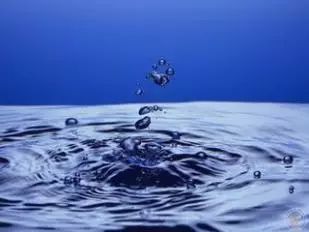
Characteristics of Yin Deficiency Constitution
[Causes] Congenital insufficiency, prolonged illness leading to blood loss, excessive indulgence depleting essence, or overwork damaging Yin. For instance, if family members tend to be thin, or if parents were weak during conception, or if there were premature births or previous hemorrhagic diseases.
[Constitutional Features]
Physical characteristics: slender body shape.
Common manifestations: hot palms and soles, often dry mouth and throat, slightly dry nose, thirst with a preference for cold drinks, dry stools, red tongue with little moisture and coating.
Other manifestations: flushed complexion, feeling of heat, dry and gritty eyes, blurred vision, slightly dry red lips, dry skin prone to wrinkles, dizziness, tinnitus, poor sleep, short and scanty urination, thin and rapid pulse.
Psychological characteristics: irritable temperament, extroverted and active, lively.
Tendency to illness: prone to dryness-heat conditions or symptoms of Yin deficiency after illness.
Adaptability to external environments: generally intolerant to heat pathogens, can endure winter but not summer, and intolerant to dryness.
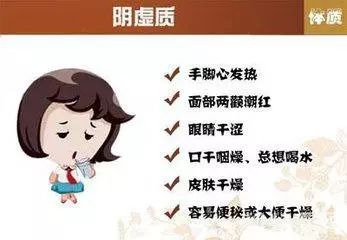
Dietary Recommendations for Yin Deficiency
In general, individuals with Yin Deficiency constitution should consume foods that nourish kidney Yin, focusing on nourishing Yin and subduing Yang. Foods that can often be consumed include duck meat, bird’s nest, sesame, lotus root, goji sprouts, loofah, tremella, tofu, sugarcane, peaches, watermelon, lily, yam, soft-shelled turtle, and jellyfish.
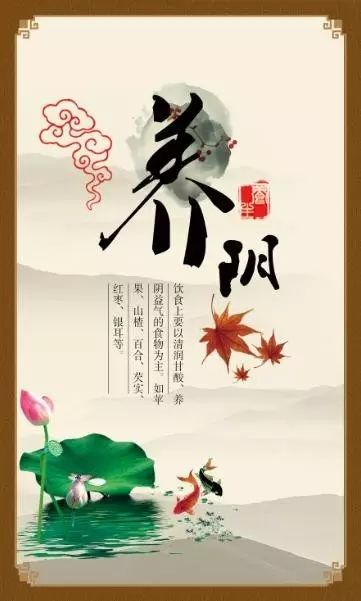
1. Duck Meat
According to the “Compendium of Materia Medica”: Duck meat is primarily used to greatly replenish deficiency and fatigue, dispel heat, promote urination, eliminate edema, relieve fullness, benefit the organs, reduce swellings, and calm seizures. It is evident that duck meat is an excellent choice for those with Yin Deficiency constitution.
2. Bird’s Nest
In the “Wen Tang Collection of Proven Recipes”, there is a small medicinal dish called Autumn Pear Bird’s Nest. Use 2 autumn white pears, cut off the stem end, scoop out the core, place 5 grams of bird’s nest and 10 grams of rock sugar inside the pear, cover with the stem, secure with a bamboo stick, and steam with a little water until cooked. Consume every morning. In this medicinal dish, bird’s nest nourishes Yin and moistens the lungs, while white pear and rock sugar moisten dryness and transform phlegm, making it particularly suitable for those with Yin Deficiency leaning towards lung Yin deficiency.
Acupoint Massage: Three Effective Points for Nourishing Yin
Among the acupoints that have a nourishing Yin effect, three are commonly used: Tai Xi (Kidney 3), San Yin Jiao (Spleen 6), and Zhao Hai (Kidney 6). Self-massaging these three points can nourish Yin fluids and improve Yin Deficiency constitution.
Zhao Hai point connects to the Yin Qiao meridian of the eight extraordinary vessels. The Yin Qiao and Yang Qiao meridians are paired, with the saying “dividing the body’s left and right Yin and Yang”. To replenish the body’s Yin, use Zhao Hai, which is located on the inner side of the foot, in the depression below the tip of the inner ankle.
Massaging Zhao Hai point is suitable for those with Yin Deficiency leaning towards kidney Yin deficiency. Here, I would like to share a little tip for better utilizing Zhao Hai point for body maintenance: when massaging this point, keep your mouth closed and if you feel saliva in your mouth, swallow it down.
Generally, after pressing for 3-5 minutes, you will feel saliva in your throat, and the pain will also ease.
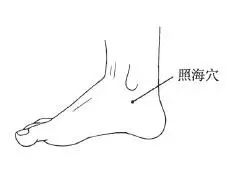
Tai Xi is the source point of the Kidney meridian, supplementing the Yin of the Kidney meridian. It is the transport and source point of the Foot Shao Yin Kidney meridian. The Foot Shao Yin Kidney meridian belongs to water in the five elements, and the kidneys govern water, so stimulating Tai Xi point can effectively “replenish water”, which is to nourish Yin.
Tai Xi point is located on the inner side of the foot, in the depression between the Achilles tendon and the heel bone.
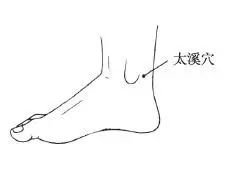
Similarly, massage twice a day for 10 minutes each time. Tai Xi is primarily used to nourish Yin, so do not use moxibustion, as moxibustion is a heat stimulus that can easily damage Yin; it is best to press and rub.
Massage of Tai Xi point can be done year-round, but during the dry seasons of spring and autumn, the massage time should be longer, as dryness easily damages Yin. Massaging for a longer time can both nourish Yin and prevent dryness from harming Yin; in summer, the time can be shorter due to the heavier humidity, as prolonged massage can lead to excessive Yin. However, regardless of the season, it is best to massage between 9 PM and 11 PM, as the body’s Yin energy is stronger at this time, which can be mutually beneficial. Tai Xi has the effect of nourishing kidney Yin and is suitable for those with Yin Deficiency leaning towards kidney Yin deficiency.
Don’t forget to nourish Yin with San Yin Jiao. San Yin Jiao is the meeting point of the liver, spleen, and kidney meridians, nourishing the Yin of all three meridians, namely the liver, spleen, and kidney. San Yin Jiao is located on the inner side of the lower leg, 3 inches above the tip of the inner ankle, behind the edge of the tibia, taken while sitting with the knee bent at a right angle. Massage twice a day for 5-6 minutes each time. Pregnant women should avoid this point. Massaging San Yin Jiao is mainly suitable for those with Yin Deficiency leaning towards lung Yin deficiency and spleen Yin deficiency.
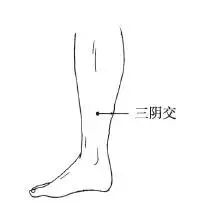
Four Famous Formulas for Treating Yin Deficiency
For those with lung Yin deficiency, who often cough with dry cough or little sticky phlegm, it is advisable to take Bai He Guo Jin Tang (Lily Bulb Decoction).
For those with heart Yin deficiency, who frequently experience insomnia, vivid dreams, palpitations, poor memory, forgetfulness, and irritability, it is suitable to take Tian Wang Bu Xin Wan (Heavenly Emperor Heart-Supplementing Pill).
For those with kidney Yin deficiency, who often have lower back and knee soreness, insomnia with vivid dreams, and night sweats, it is appropriate to take Liu Wei Di Huang Wan (Six-Ingredient Rehmannia Pill).
For those with liver Yin deficiency, who often experience dizziness, dry eyes, and deteriorating vision, it is suitable to take Yi Guan Jian (Liver Nourishing Decoction).
“Editor’s Key Points”
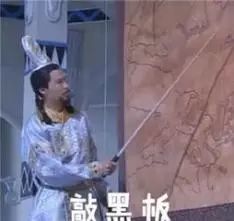
Liu Wei Di Huang Wan is not a panacea for all diseases
Liu Wei Di Huang Wan contains Shu Di Huang (Rehmannia Root) to nourish Yin and replenish the kidneys, filling essence and marrow; Shan Zhu Yu (Cornus Fruit) nourishes the liver and kidneys and can also astringe essence; Huai Shan Yao (Chinese Yam) tonifies the spleen and benefits Qi while securing essence. These three herbs work together to nourish the liver, spleen, and kidneys comprehensively, primarily focusing on nourishing kidney Yin. Ze Xie (Alisma) drains dampness from the kidneys and prevents Shu Di Huang from being overly cloying; Dan Pi (Moutan Root) can clear liver fire while moderating the astringent effect of Shan Zhu Yu; Fu Ling (Poria) lightly drains spleen dampness, assisting Huai Shan Yao in strengthening the spleen and stomach. Therefore, this formula embodies the characteristics of “three tonics” combined with “three drains”. Liu Wei Di Huang Wan is a foundational formula for nourishing the kidneys and filling essence, suitable for those with Yin Deficiency leaning towards kidney Yin deficiency.
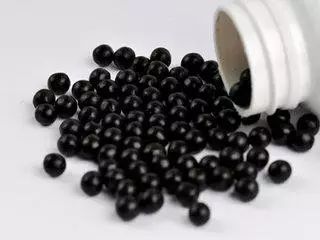
Some content in this article is selected from the “Manual for Nine Constitutions“

